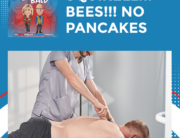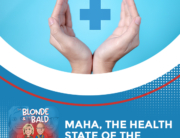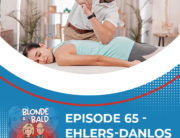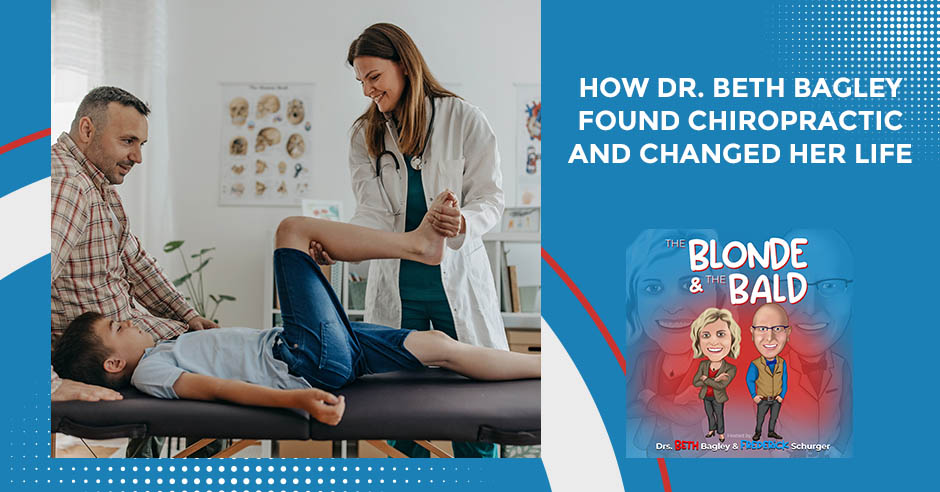
Chronic diseases tend to persist, and we succumb to the usual medical advice finding little relief. Dr. Beth Bagley has known this struggle until someone told her about a new way of looking at health with chiropractic. Soon, she found herself free from chronic problems and well on her path towards becoming a chiropractor. In this episode, we get to know her journey, how she was introduced to the practice, and how it changed her life. Together with co-host Frederick Schurger, Dr. Bagley shares with us how she discovered Upper Cervical Chiropractic and the Blair Technique. Get to know our host in this conversation as Dr. Bagley inspires us with the work she is doing in changing people’s lives.
—
Watch the episode here
Listen to the podcast here
How Dr. Beth Bagley Found Chiropractic And Changed Her Life
How are you?
I’m good. It was a good day being a chiropractor.
I see about 25 or 30. It was a lot.
I had a calm afternoon. We only start seeing people in the afternoons on Wednesdays.
Same here.
I did wake up with a stiff neck. Chiropractors get hurt, too.
I had the most horrific morning. It was miserable. My normal morning routine is I wake up, I make my coffee, and as I’m waiting for my coffee to cool down, I’ll sit and peruse the internet, except the internet wasn’t cooperating with me. I reboot my computer and my local Wi-Fi. I reboot the modem for Comcast, and all morning long, the internet worked at 10% of what it can. It felt as bad as dial-up.
I watched this movie. I don’t recommend it. I don’t even want to say what movie it is. It’s like a horror movie, and it had to do with the time of the pilgrims and Puritans. It was well-acted in a great period piece other than it being horribly scary. We complain about the internet, and the stuff that our ancestors went through to get us to where we are, we are just the luckiest group of beings there is that we have everything.
We have clean water. We have refrigeration for our meats. These are the important things.
One thing that they didn’t have was 60-mile-per-hour car accidents. I’m not saying that people back then didn’t have spinal problems, but they definitely didn’t have the multiple whiplashes that we have now. I had a patient. She’s had four major car accidents or problems that went on in her life. She has been diagnosed with fibromyalgia and chronic pain. She just got her first adjustment.
I haven’t talked to her yet to see how she did with it, other than afterward, she said it’s the first time she’s been able to breathe in a couple of years, which I would say was a pretty good, profound result from one adjustment. I’m excited to see how she does. She said that she’s excited to share her journey with people. I’m hoping that we could get her to come on to the show and give us a little bit of what it’s like to be a patient in an upper cervical chiropractic office because it’s been a while since either of us had just discovered this.
As I was going to go towards my joke about not having the internet and feeling like I was back on a modem, that’s exactly what happens when your nervous system gets shut down. You’re used to everything working, and it’s like, “I could get used to this again. I could suffer. I’ll go back to just reading text files as opposed to seeing videos and pictures.” Eventually, the body breaks down because the communication from the brain to the body isn’t working the way it’s supposed to because that internet superhighway that is our brainstem and spinal cord isn’t working the way it’s supposed to, which makes life miserable.
I’m excited to have some people on as well. I’ve got a young man who was a Marine and had a really bad accident. It was an MVA. It wasn’t like he was in battle or anything like that, but it was a severe accident that has kept him miserable for the better part of the decade now. He’s doing great. He and I are both into knives. He got me this beautiful cutting card. It’s the Greek God Atlas.
If someone’s reading this, why would Atlas be anything to them? What would that mean?
I don’t know if it would mean anything to them. We’re just getting into this and talking about how what we work with is the first two bones in the neck, the first bone being called the Atlas, which is the Greek God who held the world on his shoulders. The head and the neck pivot around the axis. That’s our focus. This is what sets us apart from other chiropractors that we’re not doing the same thing that the vast majority of our colleagues are. This is why we see some of the really strange cases.
In fact, we’re doing this on a Wednesday night because your schedule got messed up, and I’m running late because one of my cases that have had a whole bunch of problems, they needed to get in late, and we just finished up with them. If it wasn’t for me, I don’t know if this woman would be alive now. That’s how bad the husband felt about where his wife was. It’s pretty amazing.
In this episode, do we want to go over my story on how I got into chiropractic, or are we doing another?
We should do that. This would be a good time to do it.
We’re talking about me.
I know. Who doesn’t? Let’s back up. Before we even get into your chiropractic story, you did not go to school initially for chiropractic. What is your bachelor’s in?
Bachelor of Science and Biology. I got that thinking I was going to go to medical school. I had a pre-med study minor. I even took the MCAT thinking I’m going to medical school. I spent some time working in an ER as a volunteer on Friday nights at SLU Hospital, that’s in Downtown St. Louis. I decided I did not want to be a medical doctor from that experience. I highly respect medical doctors, and I probably even respect more the nurses and staff because of the stuff they go through on a daily basis. It was traumatic. That didn’t scare me so much. In ER, you have to turn your heart off.
You have to separate the love and the caring from yourself because if you’ve put that into it so much, and I know a lot of nurses still do, it’s going to get sucked out. The stuff that they saw on a nightly basis of train accidents, car accidents, falls, gunshot wounds, and stabbings, was just awful. That didn’t scare me so much. It’s just that I just knew that I would lose my heart, and I have a big heart. At that point, I decided not to be a medical doctor, and that was okay, but I really love science. With my degree, I was able to land a job at a biotech company called Monsanto.
You went to the devil.
A lot of chiropractors don’t necessarily like Monsanto. Now, it’s called Bayer, but it was Monsanto back then. There are a lot of people that worked for that company. What I learned from that job is that I did not like working in a lab. I worked in the lab as a molecular biologist for a few years. It was fun sometimes, but a lot of times, it was really boring and I wasn’t helping anyone. I was just helping myself and the company. My heart is to help people. I want to help people have a better life somehow. Honestly, at that point, I was just a kid trying to find a job. It was a good job. I made a lot of money. It was wonderful coming right out of school and making good money.
About two years into it, I decided that I maybe wanted to try something else. I happened to go to an open house at the Logan College of Chiropractic campus. About a few weeks later, I had already quit my job and applied for school, got in, and decided to become a chiropractor. Now, I had been under chiropractic care pretty much my whole life. My grandfather was a full spine-diversified chiropractor. He went to school with a G.I. Bill right after World War II. A chiropractor had saved his life. When he was a kid, he had rheumatic fever. Doesn’t rheumatic fever go to your heart?
It can.
He was told by the medical community to make sure he gets an education because he’ll never be able to do hard labor because it really affected him. Back then, who knows if a chiropractor even had a license or whatever. It could have been one of the backdoor chiropractors. You had to have a special knock to get in because they were being persecuted by the states and the medical boards, but he got to see a chiropractor. I don’t even know the story of how that happened. I wish he was around to ask him. He’d love to be on our show. He got chiropractic care, and it just empowered him. He was physically stronger than anyone. He was amazing and strong enough to go to war in World War II.
When he got out, they had that G.I. Bill, which gave him the ability to go to chiropractic school. He went to Missouri Chiropractic College and came out and started a practice down in South City, St. Louis. As a kid, I would get adjusted by him usually at his house, but he never really explained it to me. I was just a kid. I was one of the youngest of the grandkids. My sister and I were the youngest. It was pretty much, “Lay down here. You’re good. Get up. Next.” We never had any discussions about chiropractic other than I knew what it was because he did it. I really didn’t know anything about it. Even when I started school, I didn’t know anything about chiropractic.
That’s scary to say you went to school and you started off not knowing what you were even getting into, and I did not. I was a couple of semesters and trimesters into school. My whole life, I had had health problems. Starting in my early teens, I had pretty much headaches every day, and those continued. I had depression, anxiety, Irritable Bowel syndrome, and horrible menstrual cramps that would take me out of school 2 or 3 days a month. I would have panic attacks. Those started in my teenage years. I had a car accident when I was sixteen, and everything just got worse from there. I also had chronic insomnia since I was a kid. That was my normal. It took me three hours to fall asleep.
I had no idea how to fall asleep. I would go up to my sister and say, “Sarah, how do you fall asleep?” She’d be like, “Close your eyes when you go to sleep.” My body just didn’t know how to fall asleep. I was chronically exhausted. When I went to chiropractic school, I started hearing this new way of looking at health. I thought, “If chiropractic works, I’m going to stop taking my antidepressant medication. I’m going to stop doing this and that, and I’m going to be great.”
When I went to chiropractic school, I started hearing this new way of looking at health and I thought, “if chiropractic works, I’m going to stop taking my antidepressant medication.”
Two semesters in, I was about to quit school because everything was worse. I happened upon a young man named Chris, who said, “You should meet this chiropractor. He does this weird thing called upper cervical.” I was like, “I know cervical spine, but I never heard the word upper cervical.” He said, “We should meet him.” I said, “I’ll come with you. That’s fine. Are you driving?” We drove down to South County and met this chiropractor named Dr. Adam Tanase, who is now a very close friend. He explained the upper cervical to me, and I thought he was crazy because I had been adjusted my whole body.
He is crazy.
He is, in a good way. I had been adjusting my neck, back, and legs. I had been popped and cracked my whole life. Honestly, chiropractic had helped a lot. My back pain got better after I got chiropractic here. Neck pain and headaches got a little bit better, but never really 100%. The big thing is my health never changed. It was just always a chronic problem. He explained upper cervical to me and I thought, “Maybe I’ll give this a chance.” Honestly, I was about to quit school, and I was a semester away. I was handling school, but chiropractic was not working for me.
I didn’t quit school because about four months after starting care with Dr. Tanase, I got my life back. Over the course of those four months, I stopped having panic attacks, back pain, and neck pain. I learned how to sleep, which was amazing for me. When I would put my head on the pillow, I’d be asleep in fifteen minutes, and I didn’t even know what that was about. I’d wake up restored from sleep, which is amazing. Menstrual cramps, which I thought were part of being a woman, that’s not part of being a woman.
You feel a little icky on your first day, and that’s pretty normal, but not being able to get out of bed for three days is not normal. All these things that I claimed as my normal wasn’t really my normal. My normal is vibrant and full of life and vitality. At that point, I decided not to quit chiropractic school, and to devote the rest of my time to learning this upper cervical thing. I was a little bit of an outcast in school at that point then because not a lot of chiropractors do this.
Certainly not at the campus down in St. Louis.
That’s not a big thing at Logan. I lived in St. Louis my whole life, and I wasn’t about to move because I was already in middle school. I stuck with it, and I went to seminars, met doctors, and did what I need to do to find more upper cervical-related studies. What I hadn’t found was the Blair Technique, which was an incredible story in itself. Do we have time for that?
We definitely have time for that. Technically, the first time we met was not at the Blair Conference, but rather at the Upper Cervical Evolution. That would’ve been around April of 2007.
I went to the first Upper Cervical Evolution at the end of my chiropractic school.
I had just opened my practice in Springfield at that same time. I remember we ran into each other. We didn’t have any time to chat because that entire weekend was a whirlwind, but I think that was the first time we met.
At the Green Valley Ranch. That’s where the Blair Conference is going to be next.
Yes, it is. That’s going to be a good conference, too. That’s just always a good location.
I don’t remember you from that.
I only vaguely remember you because, in a crowd, you stand out.
I do. I’m not standing now, but I’m almost 6’2″, pretty tall for a female. One of the interesting things about me is you’ll come up to me and hug me, and people will say “Hi. Good to see you.” I’ll look at them and be like, “I have no idea who you are.” I won’t say that out loud. I’m polite. I wish everybody wore name tags all the time.
I just have this, and everybody knows who I am now.
We stand out. We’re the blonde and the bald. I was a few years into practice and saw some amazing results in my office. I always felt something was missing. The X-ray analysis wasn’t that great. I was doing a technique called toggle.
It was one of the first upper cervical techniques which were called Toggle Recoil. Dr. BJ Palmer from Davenport, Iowa, called it the HIO or the Hole-In-One technique. I still don’t quite understand what that is other than the fact that it’s the most profound area to adjust in the body to get a person back to where it’s supposed to be. I’m not a golfer, so I don’t appreciate that analogy nearly as much.
That technique is fabulous. It’s not as precise as I wanted it to be because coming from a science background, I like things to be very precise. Now, we’re talking about people’s brainstems. These strangers come to me and invest their money and their health, trusting me with their health, so I wanted to be the best doctor I could be. I happened upon the Blair technique not even knowing it existed. They were having a conference in St. Louis that year. I’d have to look up what year that was. I don’t even know.
I’m curious. It’s got to be 2010 or 2011.
I graduated in 2007. I started my practice in 2008. I’m going to guess it was 2010 and 2011.
It’s somewhere in there.
I went to this conference. I was even late coming there because I had seen patients on that Friday, and then I left from there and brought my tables. I show up there, and somebody helps me grab the tables out. I don’t even remember who I talked to. That was a world whirlwind, too, because then I started learning the Blair technique at that conference. There’s something called the Primary, which they don’t teach at the conferences anymore, but that’s the first part of the Blair technique if you’re a student.
I was listening about the atlas, that top bone we were talking about before, on how it moves, and realized that the technique I was using to analyze that bone on people’s X-rays was not correct, and my mind exploded. When you realize that you have someone’s life in your hands, and you are adjusting something that could give them back their life, and you’re not doing it the way that you’re not 100% know how to do it, it breaks you a little bit. I was broken coming out of that technique seminar in a good way because I knew I needed to be better. From there, I visited Dr. Schurger a few times. He taught the Blair technique Primary at his office in Springfield, Illinois. That’s when my mind also exploded a few times.
When you realize that you have someone’s life in your hands, and you are adjusting something that could give them back their life and not doing it a hundred percent, it breaks you a little bit.
It was fun to watch. Let me tell you, it’s one of those few joys that I have when I have someone new coming in from either Toggle or one of the other upper cervical techniques, or just learning it for the first time and they see it. When we talk about how we’re looking at the atlas from just a slightly different angle, people’s eyes go wide open and explode. The head melts and explodes. It’s entertaining as an instructor to see that. I’m like, “We’re onto something.” The next step is for them to repeat the course multiple times to really get good at this.
It made my practice so much more reliable of the adjustment. The way I can look at atlas and no uncertainty, just sure this is what’s going on, and get people their lives back. Dr. Blair up there in the great beyond, I appreciate him figuring this out. Now, knowing that with the new technology, like the CBCT we talked about last time, that 3D imaging, knowing that everything he said was right. We find new things out, too, but the basic things that he said about how atlas moved, he was right on. How it misaligned, he was right on. It was really cool.
I’m just so grateful to be a chiropractor. There are great many things I could have done with my life, but I do feel like God’s brought me to this. When people are saying, “I’m still searching for my profession or what I want to be when I grow up,” I don’t have that conversation. I know what I’m supposed to be. I know why I’m here. It’s an incredible journey. Every day is different. There’s a lot of the same. The business stuff, none of us chiropractors. I’m sure some of them like it, but that stuff exhausts me. What empowers me to continue to go on and do all that is to see these amazing changes in people. I love it.
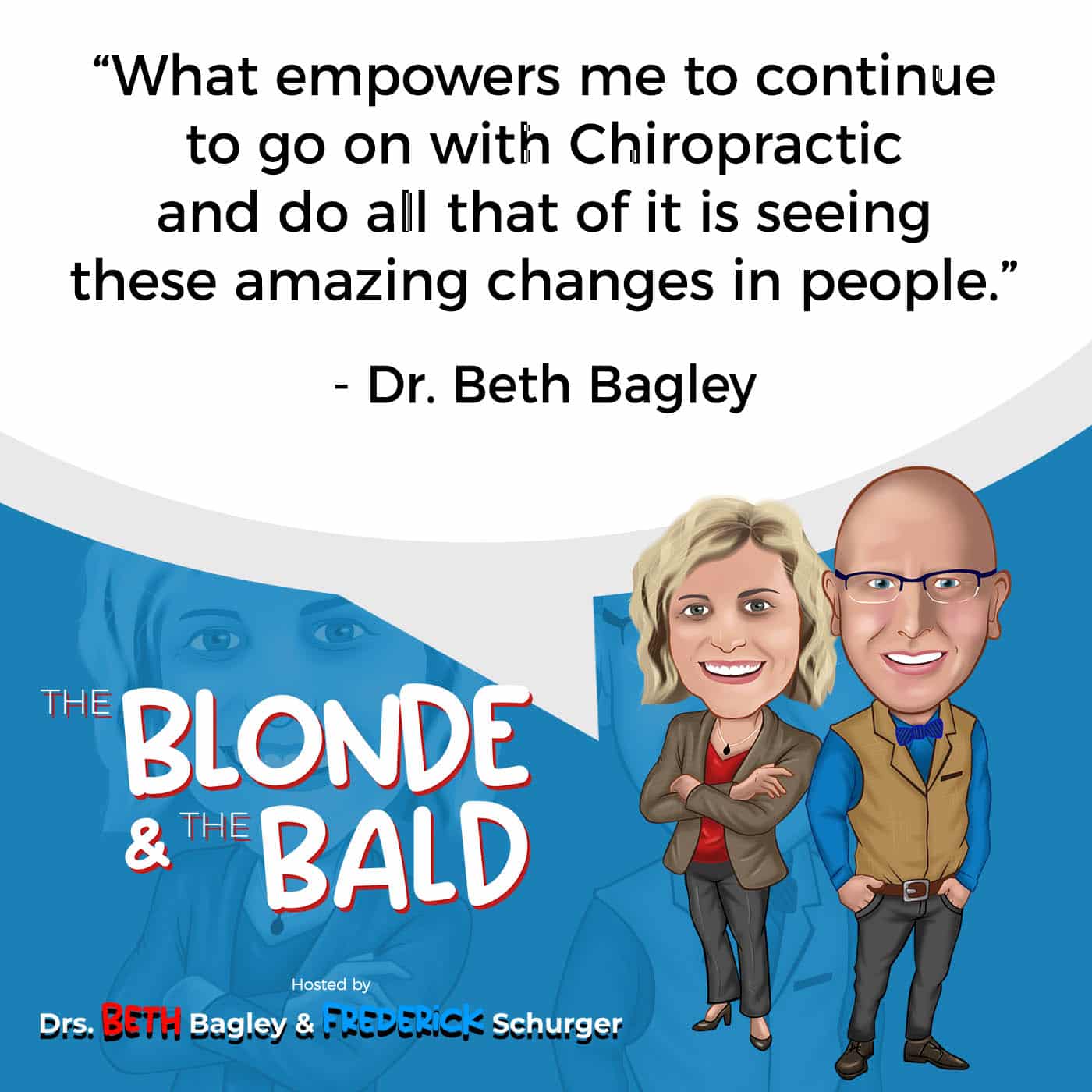
It’s great because we see people who are certainly senior citizen-style folks who come on in and are like, “Doc, I haven’t been right in twenty years.” The flip side is, “You should have been here 20 years ago.” That’s the first. The second part is we get them better, and within a couple of months, they’re like, “I can do all the things I was supposed to do.” What’s really exciting is they’ve been with you for a couple of years, and they’re doing things that their kids and their grandkids are like, “How do you keep up with this?”
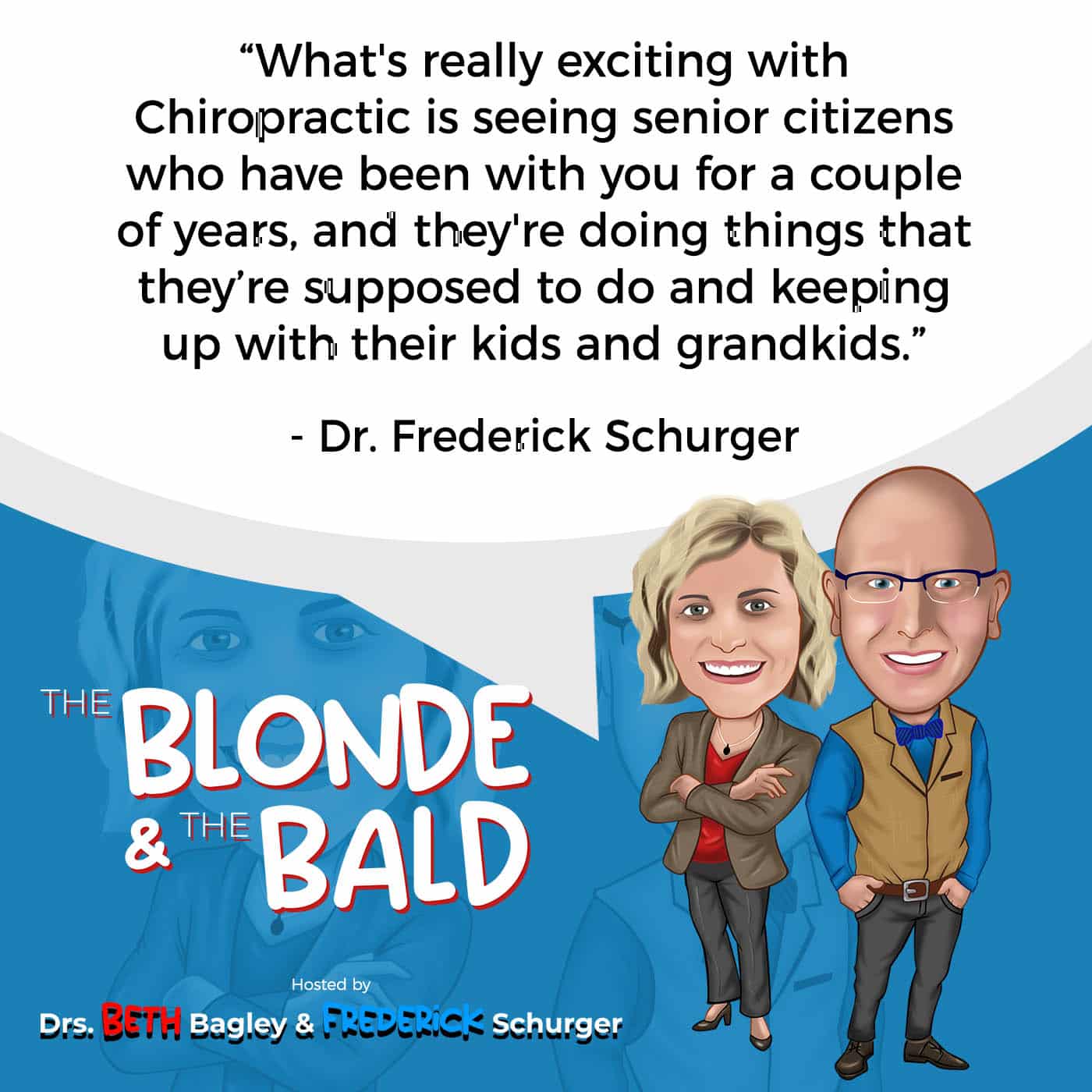
I had two 80-year-old birthdays. The 84-year-old, the joke is, “I’m still doing all this, that, and the other.” I’m like, “As long as you’re not jumping out of perfectly good airplanes, we’re doing all right.” Personally, I think she’s running laps around her children who are in their 40s, 50s, and 60s. It’s really exciting to see that and all the generations, because oftentimes, we’ll start seeing parents bring their little babies in, and we just go, “Whoop,” and then they cry, poop, and go to sleep.
What I love about a baby that’s not at ease is they’re crunched up. Their legs are crunched up, and they’re crunched. You get in there, and the adjustment on the baby has no popping, cracking, or anything scary, and you see the relaxation. The ease comes back. Patients will describe that ease coming back. Parents are like, “Whoa.” They just see this amazing, unwinding of this child where they can stretch out and just be still. It’s amazing.
Here’s my favorite, and it’s a funny story because one of the reasons I came to Springfield was because my good friend from undergrad was here, so we kept on visiting and said, “We’re going to set up in Springfield.” A couple of years after we set up and we’re down here, they had their son. I’ve known mom since undergrad as well. We were all in school together, but she’s a little bit reluctant about chiropractic. I get that. I see that a lot. I’ll tell that story next when we talk about my story in chiropractic. She’s like, “Jim, you can do whatever you want. Schurger will take care of you, but not me and not my baby.”
My wife was working on her. One of the things, when they had the baby, he had the worst colic, was up all night, and would not go to sleep. They had a driving routine to get him to even calm down. He would not latch, so she wasn’t able to breastfeed. She wasn’t able to let down. There were all of these problems to get him going. After about five months, I have seen both of these people after one of our fraternity parties that are like, “You overdid it last night.” The answer was yes. I’ve seen them in those states, and this was worse. That’s how bad they were because neither of them was getting any sleep either.
Finally, she’s like, “I’ll get under care. You get him adjusted, too.” That was my only requirement. She gets adjusted. She’s doing a little bit better. He gets adjusted, this little baby boy, 5 to 6 months old. All of a sudden, he poops six times that first day. They’re like, “Where is this coming from?” He was constipated, but there was still a little bit that would come out every day. The entire diaper’s full.
They’re supposed to poop.
Exactly. He sleeps. They put him down at 7:00. They’re used to him up every couple of hours. They put him down about 7:00 PM, and somewhere in the middle of the night, his mom gets up to check on him just to make sure he’s not dead because he hasn’t woken up and cried. He is sleeping for the first time ever twelve hours straight through the night. He is at ease. Mom was not. Mom was still in that, “I got to wake up. It’s time to make the donuts.” She was meeting herself as she was going back to sleep, as she was waking up. It was one of those types of situations. I still laugh about it. It’s been several years now.
Time flies.
It really does. That’s a good place to wrap. What do you think? Anything else you wanted to share?
It was fun telling my story. I appreciate everyone who got through it. If you or anyone you know has issues going on, it’s worth getting checked out. A Blair chiropractor is going to be in your area. I’m in St. Louis, and Dr. Schurger’s in the middle of Southern Illinois. We’re always open for a conversation, and that’s what we’re going to be doing in this show. We’ll bring in some people that have had some amazing results.
Maybe we’ll bring in some other doctors and hear about their stories. I’m excited to get more episodes going and hopefully get some people following us. Please do follow us if you get a chance. There are going to be ways to subscribe, and I’m sure it’s all clickable around you. Follow us and subscribe. If you do have any questions or comments, leave those for us because we would love to answer those.
I have to get and finish up a CBCT analysis for a patient that’s coming in to get her first adjustment. She’s like, “You do migraines? I bet you can help me with that.”
It was good to talk to you.
It was good talking with you. We’ll talk soon.
Important Links


